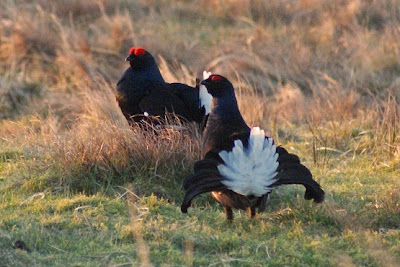 |
| Malcolm Hay and Duncan Grant outside Old Croick Manse with stalker Alasdair Sutherland. |
Preparations are now underway for next year’s Country Market and Sporting Sale after the success of 2014’s event raised a record sum to fund the Heather Trust’s important work across Britain. We have already had some great feedback from happy bidders who won lots during the Sale which was held during the Spring, including a report from our new Chairman Antony Braithwaite, who enjoyed a trip to Wales fishing for sea trout in August. We’ve also heard news of a successful driven grouse day on Speyside and an exciting day of fishing on the River Ettrick, both from generous bidders who won Lots during the Sale.
The first Heather Trust Prize
Draw was well supported across the board, and the holder of the winning ticket
took his trip up to the stunning Croick Estate near Bonar Bridge on
the 22nd November for a week of sport and relaxation in Sutherland. Duncan Grant thoroughly enjoyed his week at the estate, which he shared with his wife and the former Heather Trust chairman Malcolm Hay. A day's woodcock shooting was laid on under the supervision of stalker Alasdair Sutherland, and two hinds were culled by the winning party. Reviews for the estate were glowing, particularly in relation the warmth and comfort of the manse itself.
Plans are already in motion for a new Prize Draw in 2015, and this will build on the success of the first, which attracted widespread attention to the Sale after coverage in the sporting press.
Plans are already in motion for a new Prize Draw in 2015, and this will build on the success of the first, which attracted widespread attention to the Sale after coverage in the sporting press.
We are now looking for supporters of the Trust to give the
Sale an extra boost and drive 2015’s Country Market on to new heights. Whether
you have been a donor, a bidder or a sponsor in the past, we’d like to hear
your ideas and suggestions for possible Lots as the Sale begins to take shape.
Our new Country Market and Sporting Sale Secretary Samantha
Harrison is masterminding the proceedings for 2015 and is very keen to hear
from members and well-wishers as the plans start to come together for next
year. Lots can be as varied and diverse as stalking and fishing to food, drink
and artwork, so if you think you can help to donate something to the Sale,
please let us know by emailing info@heathertrust.co.uk












